On April 5…
” We shall defend our island, whatever the cost may be, we shall fight on the beaches, we shall fight on the landing grounds, we shall fight in the fields and in the streets, we shall fight in the hills; we shall never surrender.”
~ Sir Winston Churchill
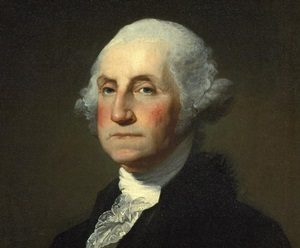
1792– George Washington exercised the first presidential veto of a Congressional bill.
The bill introduced a new plan for dividing seats in the House of Representatives that would have increased the amount of seats for northern states. After consulting with his politically divided and contentious cabinet, Washington, who came from the southern state of Virginia, ultimately decided that the plan was unconstitutional because, in providing for additional representatives for some states, it would have introduced a number of representatives higher than that defined by the Constitution.
The next day, the House attempted to override the President’s veto but failed to reach the two thirds vote required. Congress then decided to apportion representatives at “the ratio of one for every thirty-three thousand persons in the respective States.”
Washington signed the revised bill into law on April 14, 1792
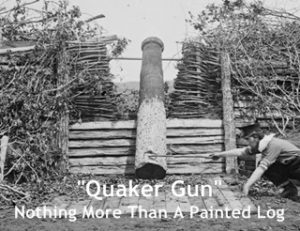
1862– Union forces under General George McClellan arrived at Yorktown, Virginia, and established siege lines instead of directly attacking the Confederate defenders … Big Mistake (and McClellan made many of them).
McClellan was discouraged by what he thought was a substantial force resting inside of strong and well-armed fortifications near Centerville, VA.
The Confederates he saw were actually 11,000 troops under General John B. Magruder. Although vastly outnumbered, Magruder staged an elaborate ruse to fool McClellan. He ordered “Quaker Guns” (logs painted black) placed in redoubts to give the appearance of numerous artillery pieces. Magruder marched his men back and forth to enhance the illusion. The performance worked, as McClellan was convinced that he could not make a frontal assault.
He opted to lay siege instead. Not until May 4 did Magruder’s troops finally abandon Yorktown, giving the Confederates valuable time to gather their troops near Richmond.
The campaign climaxed in late June when McClellan was driven away from the gates of Richmond in the Seven Days’ battles.
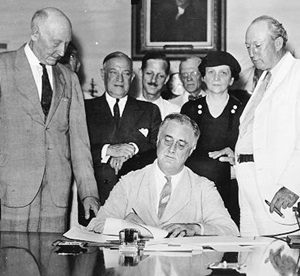
1933– President Franklin Roosevelt sign Executive Order 6102 “forbidding the Hoarding of gold coin, gold bullion, and gold certificates within the continental United States.”
The order required all persons to deliver on or before May 1, 1933, all but a small amount of gold coin, gold bullion, and gold certificates owned by them to the Federal Reserve, in exchange for $20.67 (consumer price index, adjusted value of $400 today) per troy ounce.
Under the Trading with the Enemy Act of 1917, as amended by the Emergency Banking Act of March 9, 1933, violation of the order was punishable by fine up to $10,000 (equivalent to $193,548 today) or up to ten years in prison, or both.
The limitation on gold ownership in the U.S. was repealed after President Gerald Ford signed a bill legalizing private ownership of gold coins, bars and certificates by an act of Congress which went into effect December 31, 1974.
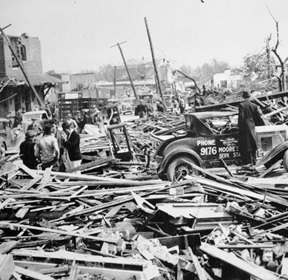
1936– The fourth deadliest tornado in U.S. history slammed into Tupelo, MS. It registered an F5 (the most dangerous) on the Fujita scale, causing total destruction along its path. The tornado claimed the lives of 233 people but one-year old Elvis Presley and his mother survived.
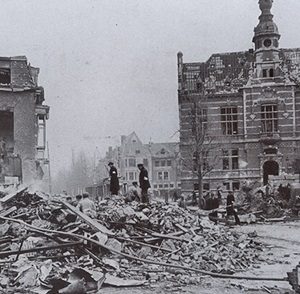
1943– 82 American bombers accidentally caused more than 900 civilian deaths, including 209 children, and 1,300 wounded among the civilian population of the Belgian town of Mortsel.
The Eighth American Bomber Command’s target was the Erla-factory – formerly a Minerva car factory, then used to repair Luftwaffe planes.
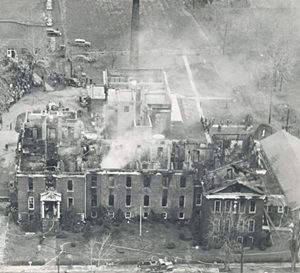
1949– A fire at St. Anthony’s Hospital in Effingham, Illinois, killed 77 people.
The 100-bed hospital was constructed mainly out of wood and brick. Parts of the building dated back to 1876. By 1949 the facility was completely outdated. It contained open corridors and staircases. Many walls and ceilings were covered with oilcloth fabrics and combustible soundproof tiles. The building lacked sprinklers as well as fire detection and alarm systems.
There were 116 patients and ten staff on duty when the fire started. Many of them were trapped on the upper floors by the rapid spread of the fire. These included eleven newborn infants in the nursery.
The cause of the fire remains unknown.
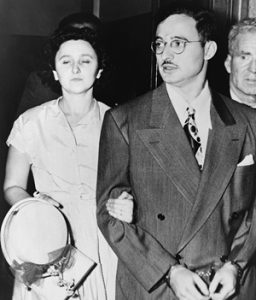
1951– At the end of a highly publicized espionage case, death sentences were imposed against Julius and Ethel Rosenberg, one week after the couple were found guilty of conspiring to transmit atomic secrets to the Soviet Union.
The trial occurred at the height of the “red scare” in the early 1950s, and critics of the case argued that the political climate of the time made a fair trial impossible.
The Rosenbergs maintained their innocence, but David Greenglass (Ethel’s brother who had been stationed near the Los Alamos atomic testing site during World War II and had pleaded guilty), agreed to testify against them.
At the trial’s end in the spring of 1951, David Greenglass was sentenced to 15 years in prison, and the Rosenbergs were sentenced to death.
Despite court appeals and pleas for executive clemency, the Rosenbergs, the first U.S. civilians to be given the death penalty in an espionage trial, were executed by electrocution on June 19, 1953.
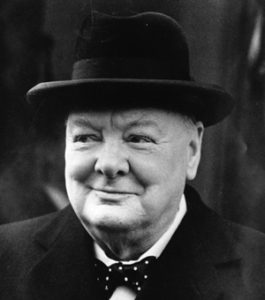
1955– Sir Winston Leonard Spencer Churchill, the British leader who guided Great Britain and the Allies through the crisis of World War II, retired as prime minister of Great Britain.
After the outbreak of World War II in Europe, Churchill replaced Neville Chamberlain as prime minister of a new coalition government. In the first year of his administration, Britain stood alone against Nazi Germany, but Churchill promised his country and the world that Britain would “never surrender.”
He rallied the British people to a resolute resistance and expertly orchestrated Franklin D. Roosevelt and Joseph Stalin into an alliance that eventually crushed the Axis.

1964– 5-star Gen. Douglas MacArthur died of biliary cirrhosis, a slow, progressive destruction of the small bile ducts of the liver. He was 84.
He was a Chief of Staff of the United States Army during the 1930s and played a prominent role in the Pacific theater during World War II, receiving the Medal of Honor for his service in the Philippines Campaign.
On September 2, 1945. MacArthur, as commander in chief U.S. Army Forces Pacific, accepted the formal Japanese surrender aboard USS Missouri, thus ending hostilities in World War II.
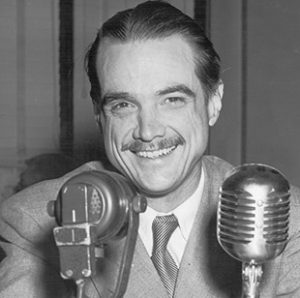
1976– Howard Robard Hughes, one of the richest men to emerge from the American West during the 20th century, died while flying from Acapulco to Houston.
A successful film producer, Hughes also invested heavily in the burgeoning aviation industry. He became increasingly reclusive after 1950. Operating through managers who rarely saw him in person, he bought up vast tracts of real estate in California, Arizona, and Nevada that skyrocketed in value.
In 1967, he became involved in the Nevada gambling industry when he purchased the Desert Inn Hotel on the Las Vegas strip. By the early 1970s, Hughes had become the largest single landholder in Nevada, and with around 8,000 Nevada residents on his payroll, Hughes was also the state’s largest employer.
In his final years, the billionaire became even more obsessed with privacy. Other than a few male aides, no one saw Hughes, and he sometimes worked for days at a stretch in a black-curtained room without sleeping.
Emaciated and deranged from too little food and too many drugs, Hughes finally became so ill that his aides decided that he needed medical treatment. He died in his airplane en route from Acapulco to Houston at the age of 70.

1981– Canned Heat lead singer Bob Hite died of a drug overdose. He was 38.
During a break between sets at The Palomino Club in North Hollywood, Hite was handed a drug vial by a fan. Thinking it contained cocaine, Hite stuck a straw into the vial and snorted it.
The drug turned out to be heroin and Hite turned blue and collapsed. Roadies put Hite in the band’s van and drove him to a nearby home where he died.
Let’s Work Together was the band’s only top ten hit to feature Hite’s vocals. Their two biggest hits – On The Road Again and Going Up The Country – featured guitarist Alan Wilson on lead.

1985– At 10:50 a.m. (EST), over 8,000 radio stations worldwide simultaneously broadcast We Are The World, a single aimed at helping African famine relief efforts, and recorded by 46 American singers and musicians under the name of USA For Africa (United Support Of Artists For Africa).
The song was also broadcast by Muzak, a company which pipes background music into 110,000 stores and businesses in the U.S.
It was only the second time Muzak had played the sound of a “human voice”, the first being an announcement in 1981 on the release of American hostages in Iran.

1992– Sam Walton died of multiple myeloma at the age of 74.
He was best known for founding Walmart and Sam’s Club. Wal-Mart Stores Inc. grew to be the world’s largest corporation by revenue as well as the biggest private employer in the world.
At the time of his death, his company employed 380,000 people.

1994– Kurt Cobain, lead singer, songwriter and guitarist with Nirvana, was found dead at his home in Seattle, Washington by electrician Gary Smith, who had arrived to install a security system. Cobain was 27.
The Seattle Police Department incident report stated that “Kurt Cobain was found with a shotgun across his body, had a visible head wound and there was a suicide note discovered nearby.”
The note stated that Cobain had not “felt the excitement of listening to as well as creating music, along with really writing for too many years now.”
A high concentration of heroin and traces of diazepam were also found in his body. The coroner’s report estimated Cobain died on April 5.
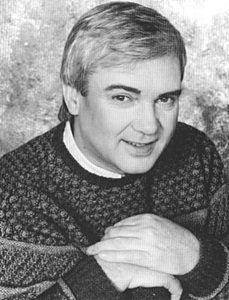
2006– While on a tour of England, singer Gene Pitney suffered a fatal heart attack and died at the age of 66.
Pitney charted sixteen Top 40 hits in the United States, four of them in the Top 10. He also wrote Rubber Ball for Bobby Vee, He’s A Rebel for the Crystals, and Hello Mary Lou for Rick Nelson.
In 2002, he was inducted into the Rock and Roll Hall of Fame.

2008– Actor Charlton Heston died at the age of 84. His death certificate listed pneumonia as the cause of death.
He appeared in 100 films over the course of 60 years. His most memorable roles were in The Greatest Show On Earth, The Ten Commandments, Touch of Evil, Ben-Hur, for which he won the Academy Award for Best Actor, El Cid , The Agony and The Ecstasy, Planet of The Apes, Soylent Green, and Midway.
He created a whirlwind of controversy at the 2000 NRA convention when he raised a rifle over his head and declared that a potential Al Gore administration would take away his Second Amendment rights “from my cold, dead hands.”
On August 9, 2002, he publicly announced that he had been diagnosed with symptoms consistent with Alzheimer’s disease.
In July 2003, in his final public appearance, Heston received the Presidential Medal of Freedom at the White House from President George W. Bush.
Compiled by Ray Lemire ©2019 RayLemire.com / Streamingoldies.com. All Rights Reserved.